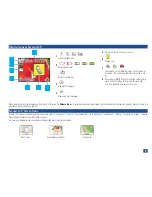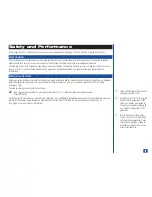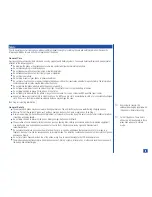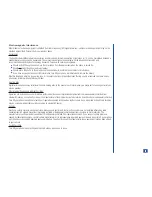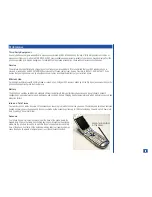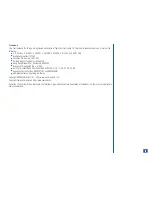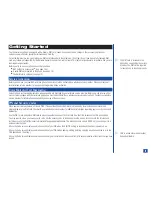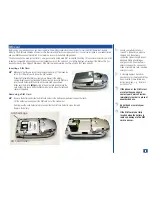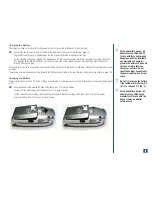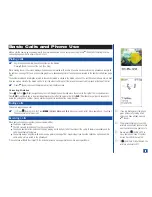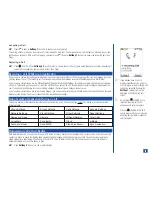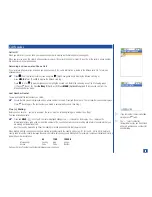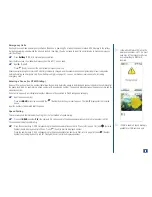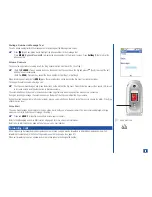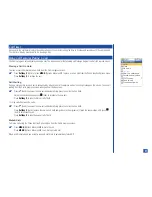
Radio Frequency (RF) Signals
THIS MODEL PHONE MEETS THE GOVERNMENT’S REQUIREMENTS FOR EXPOSURE TO RADIO WAVES.
Your wireless phone contains a radio transmitter and receiver. Your NEC phone is designed and manufactured not to exceed the
emission limits for exposure to radio frequency (RF) energy set by the Federal Communications Commission of the U.S. Government.
These limits are part of comprehensive guidelines and establish permitted levels of RF energy for the general population. The guidelines
are based on standards that were developed by independent scientific organizations through periodic and thorough evaluation of
scientific studies.
The exposure standard for wireless mobile phones employs a unit of measurement known as the Specific Absorption Rate (SAR). The
SAR limit set by the FCC is 1.6W/kg.
*
Tests for SAR are conducted using standard operating positions accepted by the FCC with the
phone transmitting at its highest certified power level in all tested frequency bands. Although the SAR is determined at the highest
certified power level, the actual SAR level of the phone while operating can be well below the maximum value. This is because the
phone is designed to operate at multiple power levels so as to use only the power required to reach the network. In general, the closer
you are to a wireless base station antenna, the lower the output.
Before a phone model is available for sale to the public, it must be tested and certified to the FCC that it does not exceed the limit
established by the government-adopted requirement for safe exposure. The tests are performed on position and locations (for example,
at the ear and worn on the body) as required by FCC for each model. The highest SAR value for this model phone as reported to the FCC
when tested for use at the ear is 1.2 W/kg, and when worn on the body, is .561 W/kg. (Body-worn measurements differ among phone
models, depending upon available accessories and FCC requirements). While there may be differences between the SAR levels of
various phones and at various positions, they all meet the government requirement.
Body-worn Operation
The FCC has granted an Equipment Authorization for this model phone with all reported SAR levels evaluated as in compliance with the
FCC RF exposure guidelines. SAR information on this model phone is on file with the FCC and can be found under the Display Grant
section at http://www.fcc.gov/oet/fcid after search on FCC ID A98-KMP6J1F1-1A.
For body worn operation, this phone has been tested and meets the FCC RF exposure guidelines when used with a NEC accessory
designated for this product or when used with an accessory that contains no metal and that positions the handset a minimum of 1.5 cm
from the body.
Aircraft Safety
The use of wireless phones in aircraft may be dangerous to the operation of the aircraft and may be illegal. Any use of a wireless phone
on board an aircraft must be in accordance with applicable regulations. Follow all flight crew instructions. When instructed to turn Off
your wireless telephone, do so.
Road Safety
Check the laws and regulations concerning the use of wireless telephones and their accessories in the areas where you drive and always
obey them. If you find it necessary to use your cellular telephone behind the wheel of a car, please:
l
Give full attention to driving and exercise proper control of your vehicle at all times. (See Flag.)
l
Observe all the recommendations contained in your local traffic safety documentation.
l
Pull off the road and park before making or answering a call, if driving conditions so require.
l
Turn Off your wireless phone at a refueling point, such as a gas station, even if you are not refueling your own car.
l
Do not store or carry flammable or explosive materials in the same compartment as a wireless phone.
*
In the United States, the SAR limit for
wireless mobile phones used by the public
is 1.6 watts/kg (W/kg) averaged over one
gram of tissue. SAR values may vary
depending upon national reporting
requirements and the network band.
O
Use hands-free operation, if
available.
12












